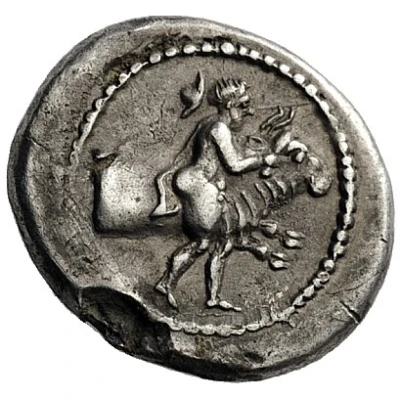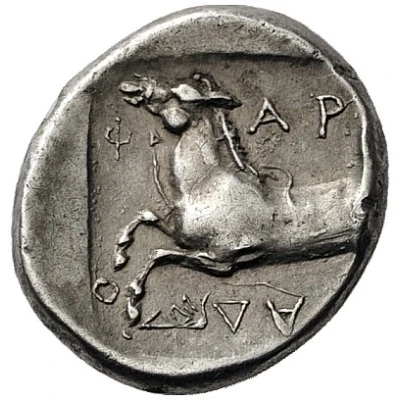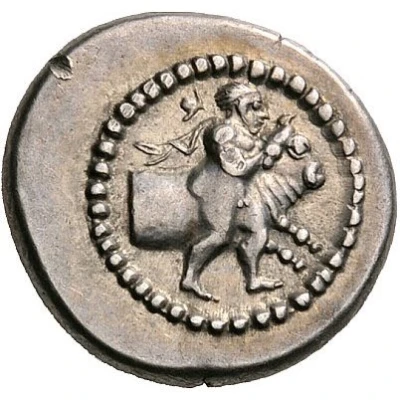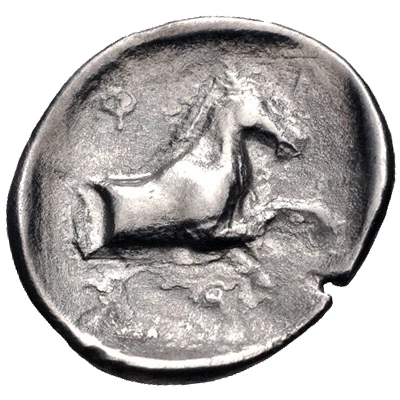


© Nomos AG
Hemidrachm 440 BC
440 BC year| Silver | 2.03 g | 15.0 mm |
| Issuer | Pharkadon (Thessaly) |
|---|---|
| Type | Standard circulation coin |
| Year | 440 BC |
| Value | Hemidrachm (½) |
| Currency | Drachm |
| Composition | Silver |
| Weight | 2.03 g |
| Diameter | 15.0 mm |
| Shape | Round (irregular) |
| Technique | Hammered |
| Demonetized | Yes |
| Updated | 2024-10-10 |
| Numista | N#185315 |
|---|---|
| Rarity index | 100% |
Reverse
Forepart of bridled horse to left, the reins trailing. Below horse to left, sandal
Script: Greek
Interesting fact
The Hemidrachm coin from Pharkadon (Thessaly) was used as a form of currency in ancient Greece during the 5th century BC. Its name "Hemidrachm" means "half drachma" and it was valued at half the weight of a standard drachma coin. Despite its relatively small value, the Hemidrachm was widely used in trade and commerce throughout the region. It's interesting to note that the coin's design features a facing head of a satyr, which is a mythical creature with the upper body of a man and the lower body of a goat. The satyr is surrounded by a wreath of olive leaves, which symbolizes peace and prosperity. The coin's reverse side features a quadripartite incuse, which is a pattern of four squares arranged in a square. This design was used to prevent counterfeiting and to ensure the coin's authenticity. Overall, the Hemidrachm coin from Pharkadon (Thessaly) is a fascinating piece of history that provides insight into the economic and cultural practices of ancient Greece.



